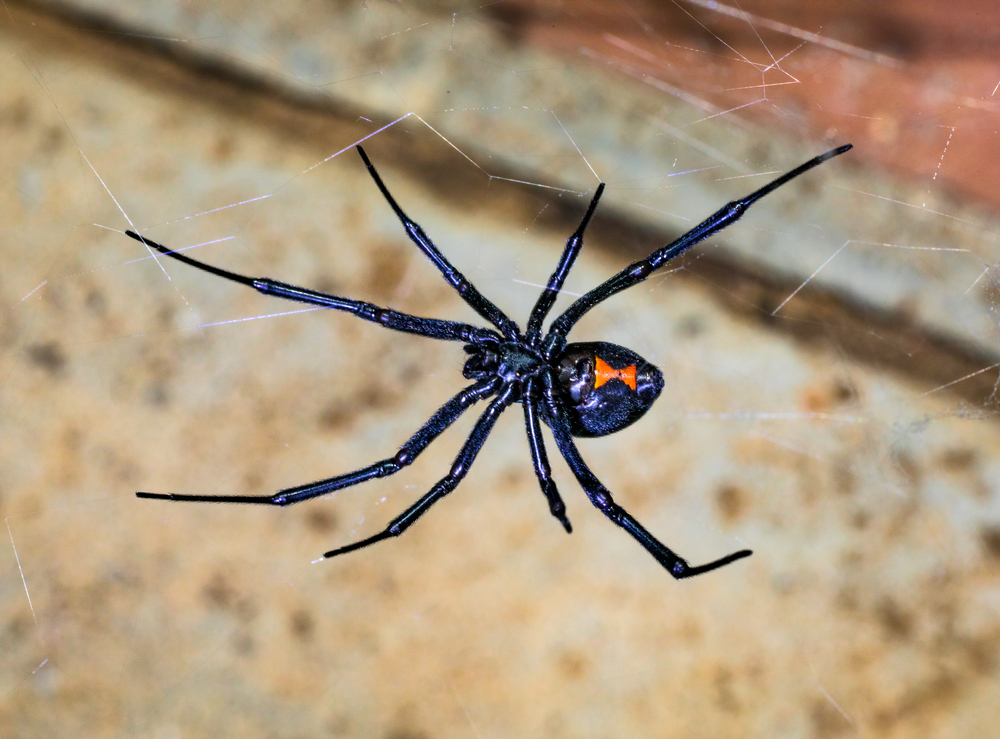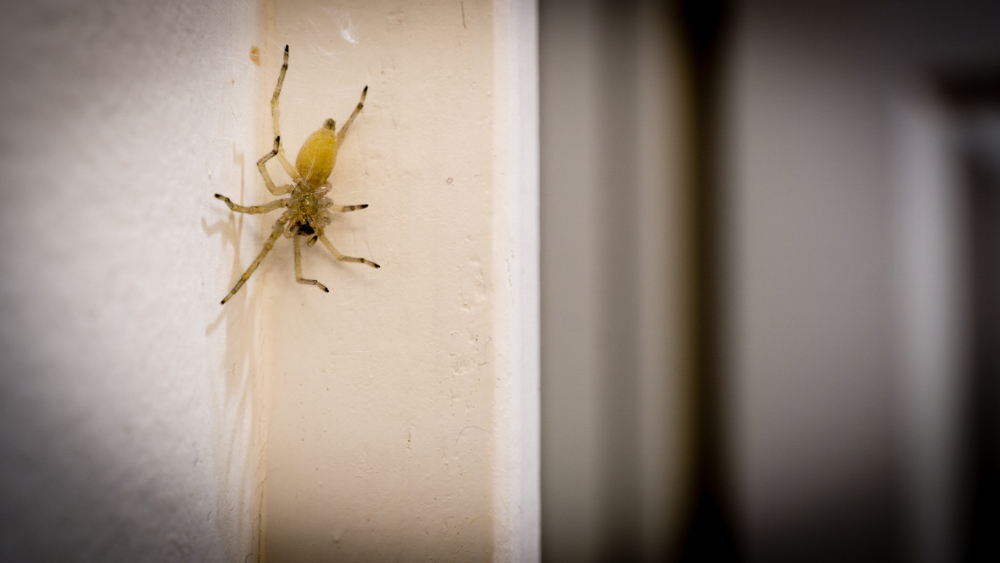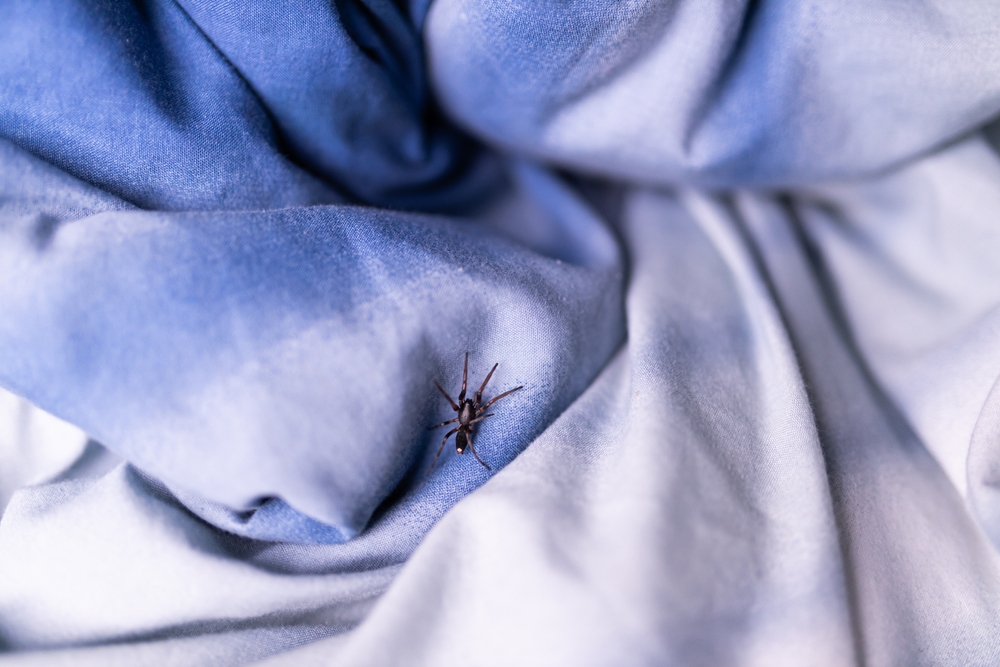What Are The Most Dangerous Spiders in the United States and How to Avoid Them?
In the United States, some spider species are considered extremely dangerous. These aren’t just creepy, but can also represent serious health risks. You might think that their bites are very rare, which is true, but it doesn’t mean that you can afford to ignore the potential dangers. Spider bites can lead to intense pain, tissue damage, and most importantly, can cause serious allergic reactions.
The number of allergic patients is constantly increasing, so any contact with a venomous spider represents a huge risk of anaphylactic shock. This is why it is essential to understand which spiders are most dangerous and how to keep them away from your home.
Before you panic, let us tell you the good news: keeping these creepy creatures away from your home is easier than you can imagine. With the right knowledge, and by following a few easy steps, you can transform your home into a spider-free zone. Continue reading and let’s get into how to stay safe and far away from those little hairy legs.

Here Are 5 Most Dangerous Spiders in the United States
1. Black Widow Spider
The black widow is one of the most dangerous creatures in the United States. These venomous little critters are known for their black bodies and red hourglass markings on their abdomens. They love to hide in dark places, such as basements, and even the nooks of your outdoor shed are some of their favorite places.
Let’s get one thing straight: this spider’s venom is no joke. Its bite is packed with neurotoxic venom, which can cause an entire list of symptoms, such as severe pain, muscle cramps, and even nausea.
The good news is, that no matter how painful the bite is, it’s rarely fatal. However, if you catch it early, don’t hesitate to get medical attention immediately.
The black widow spider has a fearsome reputation, am I right? But these little creatures aren’t that aggressive. They act like introverts, always preferring to hang out in dark and silent spaces, such as corners and garages.
2. Brown Recluse Spider
Imagine sitting on the couch and watching your favorite show, when suddenly you see a Brown Recluse enjoying your carpet. Compared to the Black Widow, this one is usually confused with other harmless brown spiders, but in reality, it’s one of the most dangerous creatures in the United States.
The most interesting part is that Brown Recluse is a master of disguise. It can be recognized by its signature violin-like shape on its back.
He loves to chill and usually spends his life in areas like basements and closets. And yes, these spiders are as reclusive as their name implies. They prefer to stay out of sighs, and the cases when they show themselves are extremely rare.
Unfortunately, a Brown Recluse bite is something you can’t forget easily. Its venom can be extremely dangerous because it contains enzymes that can cause tissue damage and the bite may start to develop a necrotic wound.
3. Hobo Spider
These spiders are typically brown, with a herringbone pattern running down their backs. Hobo spiders are not usually aggressive, but if you poke around their home, they are most likely to bite you in self-defense. Even though their venom is no joke, their bite is not as dangerous as the ones caused by Black Widow or Brown Recluse. It can be painful, but most of the time, it does not get infected.
The good news? Some Homo spider bites are not dangerous at all and have nothing to do with humans. However, it’s better to keep them away from your house, garden, and basement. So, if happen to encounter one, don’t get too close and make sure you do your best to make them leave. Continue reading to find out the best tips and tricks on how to keep spiders away from your home.

4. Yellow Sac Spider
Yellow Sac spiders are always hiding and love minding their own business. However, they can be often spotted in the garden, or the dark corners of a home.
Unlike many other spiders, the Yellow Sac is very aggressive and will bite without much provocation. Even though their venom is not as toxic as some of the other spiders on the list, it can still be extremely painful. So, if you get bitten by a Yellow Sac, expect swelling, itching, and redness. In severe cases, the bite can cause even more intense reactions.
Probably the most unpleasant thing is to have an allergic reaction after you get bitten. This is one of the worst-case scenarios because allergies are no game. So, if you experience shortness of breath, make sure to see a doctor as soon as possible.
Nowadays, there are more and more people dealing with allergies, so it’s not uncommon for their sensibility to worsen the bite of a spider. If it happens to you, stay calm, and seek immediate doctor attention.
5. Tarantula
Who doesn’t know what Tarantula is? It has basically become the celebrity of the spider world. Being known for its enormous size and hairy legs, the tarantula has an extremely intimidating appearance.
It’s interesting how the creature, even though it looks awful, is most of the time pretty chill. Tarantulas tend to mind their own business and only attack when it’s absolutely necessary.
Their venom is not deadly to humans, but it can still hurt and generate swelling and redness. The real issue is that many people are very allergic to the venom, which leads to serious symptoms like nausea and dizziness.
So, unless you are picking them up, tarantulas are harmless and often kept as exotic pets.

What You Need to Know About Spider Bites
Spider bites are no joke and understanding how to handle one of these can make the difference between a minor irritation and something more serious that requires medical attention. In the next part of this article, you will find out more about what to do if you get a spider bite and how to treat it.
1. Identify it
The most important step is to identify the bite and understand that is actually from a spider. Sometimes, a similar mark can be left by a mosquito. So, the first step is to identify if the bite is actually from a spider. Here are some of the most common characteristics:
- redness – most of the spite bites will become instantly red
- swelling – around the bite the skin will most likely become swollen
- pain – if the spider is venomous, immediate pain is often encountered
- ulceration – depending on the species, the bite may develop into a necrotic wound, which can cause tissue death
2. Stay calm
Yes, it might hurt, but if you freak out nothing is going to work better. Try to control your panic and take a moment to assess the bite. Did you see the spider? It would be perfect if you can identify it. The provided medical attention will be more accurate if you know exactly what you are dealing with.
Even though for the majority of spider bites all you need is basic first aid, it’s essential to identify the spider and stay calm.
3. Clean the bite area
One of the most important things you need to do after you get bitten is to use soap and water to clean the bite area. It will help reduce the risk of infection, especially if the spider punctures the skin deeply.
In case you don’t have access to a water source, the best is to use a clean cloth and remove all the dirt from the bite site. Never use alcohol or hydrogen peroxide, because these substances can irritate the skin and slow down the healing process.
4. Apply a cold compress
If you experience any swelling or pain, make sure to apply a cold compress to the affected area. An ice pack wrapped in a towel works best. Hold the compress until you see your doctor. Keep in mind that you should keep the cold for around 15 minutes, then leave the skin to breathe for another 15. This way, you will help constrict blood vessels and numb the area.
5. Elevate the affected limb
In case the bite is on your leg or arm, make sure to elevate the limb. It can help reduce swelling because it helps fluid move away from the bite area, significantly reducing the chances of swelling and inflammation.
After you see your doctor, make sure to take some rest, prop your arm or leg on a pillow, and keep it elevated for several hours.
6. Take pain relievers
If you deal with pain, don’t hesitate to opt for a pain reliever like ibuprofen or acetaminophen to help relieve discomfort. Be sure to follow the recommended dosage on the label and drink plenty of water to stay hydrated.
7. Use antihistamines
As you already know, allergies are becoming more and more common, so when a bite becomes itchy or inflamed, it’s important to reduce it before it worsens. So, antihistamines work best in these cases. For topical relief, you can use hydrocortisone cream. It can be directly applied to the bite site.
When to Seek Medical Help
It’s essential to seek medical help before the symptoms of a spider bite worsen. Just to be sure that nothing goes wrong. However, considering that most spider bites can be easily treated at home, Americans hesitate to see their doctors. However, here is a list of symptoms that should never be ignored and need medical help ASAP!
- Severe pain
- Muscle cramps
- Fever and chills
- Difficulty breathing
The severe pain may indicate that you have been bitten by a venomous spider, such as a Black Widow. When the pain is accompanied by cramping, sweating, and fever, is obvious that you’ve got an infection that should be treated immediately. On the other hand, if you experience difficulty breathing, you are probably dealing with a high risk of anaphylactic shock. Whenever the symptoms worsen, medical attention is necessary.

How to Keep Spiders Away from Your Home
Spiders are one of the most common creatures known for invading our gardens and homes. Even though they play an essential role in the ecosystem, because they are very important in controlling pests, there’s no denying that many people hate spiders. Something about those hairy and long legs is incredibly scary. So, their presence is not wanted, especially in the living spaces.
But don’t worry! We’ve got you covered! There are a variety of methods to get rid of spiders and we are ready to share everything with you. Reclaim your power and keep unwanted guests away from your home!
1. Identify the problem
Before you start using any repellent, it’s essential to understand how many spiders are in your home. Are they the type that you need to worry about?
As we already know, most spiders are not dangerous for humans, but there are a few species that can represent huge problems. Some of these are the Black Widow and the Brown Recluse. For the non-venomous spiders, you don’t need to worry, but it’s still important to make some changes in your house.
2. Keep your home clean
Spiders love to hide in the dark. So, usually, they love to spend their time in secluded spaces, such as basements, closets, bathrooms, and corners in living areas. You should regularly check the spots that are not often disturbed and properly clean every corner of your home. Knowing exactly which are their hiding spots, will help you rapidly determine where action is needed.
One of the easiest ways to keep spiders at bay is by vacuuming. These creatures are often attracted by dust and insects, so keeping your floors and corners clean will significantly reduce the likelihood of them setting up a camp.
Here are some of the spots we all tend to forget about and are extremely loved by spiders: corners, behind furniture, and under beds.
Oh, and spiders also love to hide in boxes and piles of clothes, so regular declutters are much needed, not only to keep your closet clean but also to prevent spiders from entering your house.
Pay attention to your windows and doors because spiders usually crawl through them when they are open. You can secure your space by wiping down your windows regularly and checking you don’t have any holes spiders can get through.
3. Seal all the entry points
If you want to stop spiders from entering your home, you need to seal all the entry points. Most of the time, these little creatures enter through cracks and crevices in walls, windows, doors, and floors. So, blocking their way is an extremely effective method. The only problem is that sometimes it can be different to spot their paths.
You should start by inspecting the walls and floors. Then, use a caulk to fill any holes, especially around window frames and doors. This will help keep spiders and other pests from sneaking in.
4. Use natural repellents
Did you know that natural repellents are extremely effective when you want to keep unwanted guests away from your home? For example, spiders hate certain oils, including peppermint and citrus oils. So, here’s what to do: mix 10 drops of essential oil with water in a spray bottle and spritz the mixture around the corners of rooms. It will magically keep all the scary little creatures away!
On Amazon, you can find a great product. It’s a plant-based oil that will help you keep away all the unwanted guests.
You can also opt for cotton balls. Soak them in essential oils and place them in all the areas that seem infested. The strong smell will keep spiders from building homes.
Another incredibly effective natural repellent is vinegar. You can mix vinegar and water in a bottle and spray it around all the spider-probe areas. This will not only keep spiders away but will also dislodge existing webs.
Last but not least, opt for citrus peels. Spiders hate lemon or orange peels and this makes them one of the most affordable natural repellent.

5. Chemical Repellents
Even though natural methods are a great option, sometimes a more potent solution is necessary, especially in case you are dealing with an infestation.
Numerous spider sprays can be found on the market. These are specifically designed to kill spiders on contact and create an effective barrier to prevent them from re-entering.
If you want to use chemical repellents, make sure to respect all the instructions found on the label, and be extremely cautious with the areas that can put your life in danger.
Another way to get rid of spiders in your home is to use sticky traps. You need to place the traps on the areas prone to spiders. The method is working great, but will not stop spiders from entering your home. However, it can still be a great solution for those who want to catch any stragglers and monitor the infestation.
Have you ever been bitten by a venomous spider? Feel free to share your experience in the comment section found below. If the answer is yes, let us know how was the recovering process. Was it easy to manage or not?
Are you interested in learning more about America’s wildlife? Here’s what you should read next: 5 Best Places for Wildlife Spotting in America













One Response